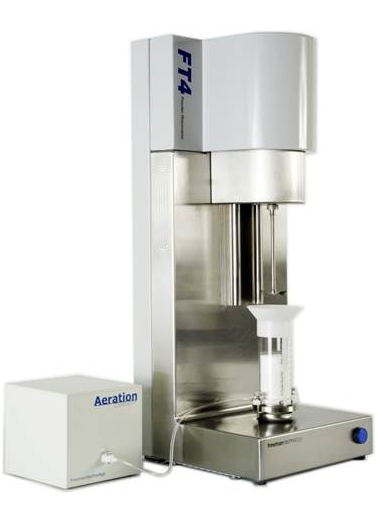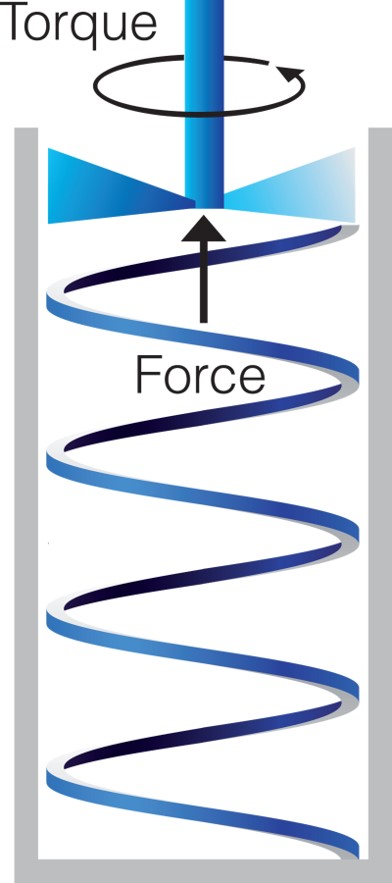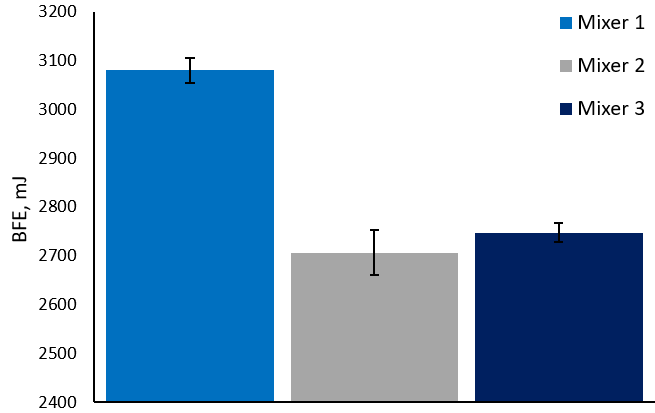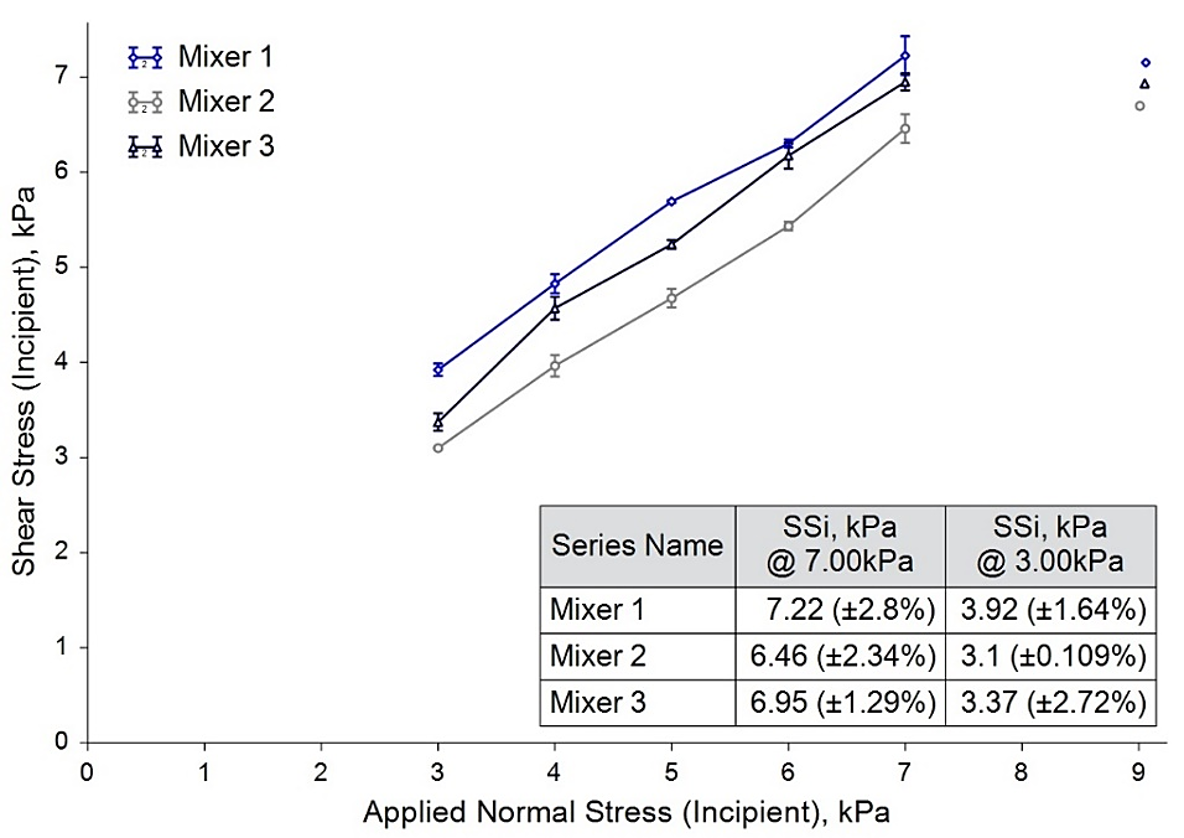Tim FreemanOctober 21, 2020
Tag: powders , blender , FT4 Powder Rheometer
In many industries, powders are combined with other powders, or binders, in high-shear blending operations, forming homogeneous mixtures for further downstream processing. The diverse range of blender sizes, geometries and methodologies means that performance can vary from machine to machine, producing mixtures with different flow properties that perform differently in subsequent operations.
It is important to understand the influence of any given unit operation on downstream performance, as incompatibility can lead to a product that is out of specification and not fit for purpose. Ensuring that downstream performance has not been detrimentally affected by upstream processes requires an understanding of how the powder and the process interact with each other. Once this is understood, the process can be optimised to deliver a product with desirable properties. This provides significant commercial benefits in terms of higher productivity and reduced wastage.
The Influence of Processing Powders
Three blends of Magnesium Oxide (MgO) and Graphite, along with a resin binder, were used in the production of refractory bricks. The blends were from the same feedstock, but were prepared using different mixers (Mixer 1, Mixer 2 and Mixer 3) and differences in the quality of the final product were observed depending on the mixture used. Mixture 1 demonstrated optimum performance, and Mixture 3 exhibited the worst behaviour. Mixture 2 represented intermediate performance.
The three mixtures were evaluated using an FT4 Powder Rheometer® to investigate the Dynamic Flow, Bulk and Shear properties.
FT4 Powder Rheometer®


The FT4 Powder Rheometer® is a universal powder tester that provides automated, reliable and comprehensive measurement of process-relevant material characteristics. This information can be correlated with process experience to improve efficiency and aid quality control. Specialising in the measurement of dynamic flow properties, the FT4 also incorporates a shear cell, and the ability to measure bulk properties such as density, compressibility and permeability, enabling a comprehensive characterisation of the powder in a process relevant context.
Dynamic testing employs a patented measurement technique to determine a powder’s resistance to flow. A specially shaped blade traverses along a prescribed path through a precise volume of the powder. The force and torque acting on the blade, as it moves axially and rotationally, are combined to generate a value for flow energy.
Results
Dynamic Testing: Basic Flowability Energy (BFE)
Mixtures 2 and 3 generated comparable BFE values, whereas the BFE of the Mixture 1 was significantly higher.
High BFE indicates a greater resistance to flow, which in this case is likely due to a more uniform particle packing structure.

Bulk Testing: Permeability
A clear trend was observed that correlated with the reported process performance. Mixture 1 generated the lowest Pressure Drop across the Powder Bed (highest Permeability), and Mixture 3 the highest.
Low Pressure Drop (high Permeability) indicates that the powder is more easily able to transmit air, which aids gravitational flow and promotes uniform filling.

Shear Cell Testing
Minor differences were observed in the Shear Stress values but the trend does not reflect observed performance. Furthermore, the differentiation between Mixtures 1 and 3 is minimal, and does not reflect the significant variation in process performance.
This lack of correlation with the process behaviour illustrates how Shear Cell testing, which investigates how a powder transitions from a static to dynamic state following consolidation, may not be relevant to the more dynamic, low-stress conditions present in drying, conveying and filling operations.

Conclusions
The FT4 Powder Rheometer has identified clear and repeatable differences between three blends of powder which rationalise the observed variations in process performance. Permeability was shown to be highly differentiating, suggesting that the release of entrained air during drying and filling operations significantly influenced final product quality. BFE also reinforced that more uniformly packed blends perform most effectively in the manufacturing process. Limited information was provided by the Shear Cell test, suggesting that shear properties had little influence on the overall performance. The Dynamic Flow and Bulk parameters can therefore be used to predict downstream process performance enabling mixing operations to be optimised to target desirable properties of the resulting blend.
Powder flowability is not an inherent material property, but is more about the ability of powder to flow in a desired manner in a specific set of processes. Successful processing demands that the powder and the process are well-matched, and it is not uncommon for the same powder to perform well in one process but poorly in another. This means that several characterisation methodologies are required, the results from which can be correlated with process ranking to find the most influential parameters on process behaviour. Rather than relying on single number characterisation to describe behaviour across all processes, the FT4’s multivariate approach simulates a range of unit operations, allowing for the direct investigation of a powder’s response to various process and environmental conditions.
Author Biography - Tim Freeman, Managing Director, Freeman Technology

Tim Freeman is Managing Director of powder characterisation company Freeman Technology for whom he has worked since the late 1990s. He was instrumental in the design and continuing development of the FT4 Powder Rheometer® and the Uniaxial Powder Tester. Through his work with various professional bodies, and involvement in industry initiatives, Tim is an established contributor to wider developments in powder processing.
Tim has a degree in Mechatronics from the University of Sussex in the UK. He is a mentor on a number of project groups for the Engineering Research Center for Structured Organic Particulate Systems in the US and a frequent contributor to industry conferences in the area of powder characterisation and processing. A past Chair of the American Association of Pharmaceutical Scientists (AAPS) Process Analytical Technology Focus Group Tim is a member of the Editorial Advisory Board of Pharmaceutical Technology and features on the Industry Expert Panel in European Pharmaceutical Review magazine. Tim is also a committee member of the Particle Technology Special Interest Group at the Institute of Chemical Engineers, Vice-Chair of the D18.24 sub-committee on the Characterisation and Handling of Powders and Bulk Solids at ASTM and a member of the United States Pharmacopeial (USP) General Chapters Physical Analysis Expert Committee (GC-PA EC).


Contact Us
Tel: (+86) 400 610 1188
WhatsApp/Telegram/Wechat: +86 13621645194
Follow Us:




 Pharma Sources Insight January 2025
Pharma Sources Insight January 2025


